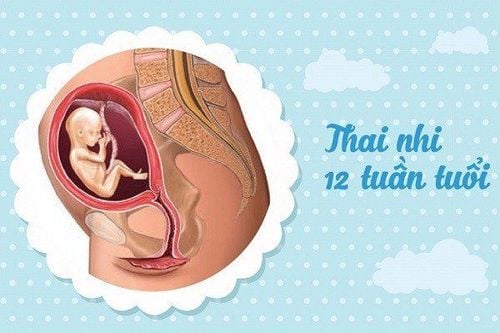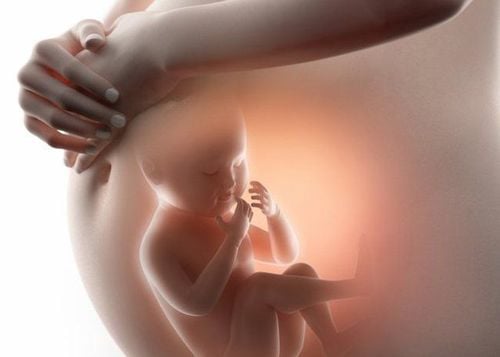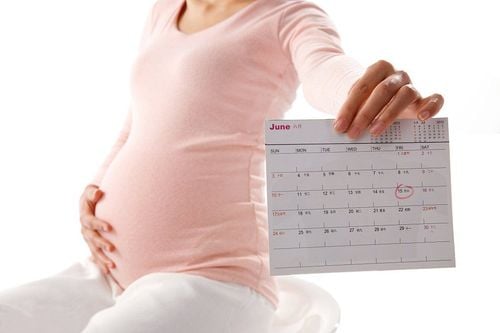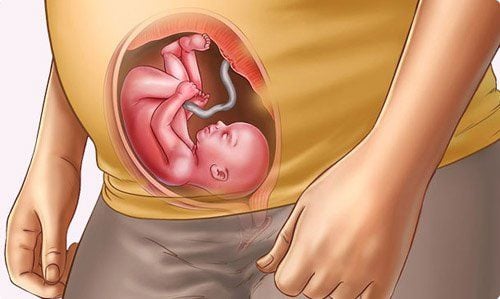This is an automatically translated article.
The article is professionally consulted by Doctor Department of Obstetrics and Gynecology, Vinmec Hai Phong International General Hospital.
The development of the 38-week fetus has slowed down, almost all the organs have started to work. Most of the changes happening this week are small but important.
1. How does a 38-week fetus develop?
Entering the 38th week of pregnancy, also known as the 36th week after conception, the circumference of the fetus's head is now equal to the waist circumference. Many pregnant mothers will wonder how much does the fetus weigh at 38 weeks? Mom is in the last stage of pregnancy, the baby can weigh about 3kg and 49.3cm long, equivalent to a small watermelon or a leek. The fat layer makes up the majority of the fetus's body mass, and has the effect of keeping the baby warm after the baby is born in the outside environment.
Specifically, the development of the fetus at week 38 is shown in some of the following points:
1.1. Toenail growth The change can be seen in the tiny feet of children. Your baby's toenails are starting to grow and are reaching the tip of their toes.
1.2. Grasping reflex Actions such as grasping and sucking are also performed more often. The training during this time allows the infant to be able to hold her mother's hand and suck on the breast soon after birth.
1.3. Eye color Fetal irises are pigmented, so if your baby is born with light-colored eyes, they are likely to change when exposed to external light, most commonly turning dark. and darker. You will know what color your baby's eyes are when he's 1 year old.
1.4. Loss of down layer Along with the disappearance of the waxy layer of sebum, almost all of the soft, silky hair covers the baby's body, which has a warming effect on the fetus when inside the uterus, they are shedding gradually to Prepare for the day your baby steps out into the outside world.
1.5. Lung development
Trắc nghiệm: Bạn có hiểu đúng về dấu hiệu mang thai sớm?
Các dấu hiệu mang thai sớm không phải chỉ mỗi trễ kinh mà còn có rất nhiều dấu hiệu khác như xuất huyết âm đạo, ngực căng tức,… Điểm xem bạn biết được bao nhiêu dấu hiệu mang thai sớm thông qua bài trắc nghiệm này nhé!
Fetal lungs are still in the complete maturation stage. This organ produces more and more surfactants, which keep the air sacs in your baby's lungs from collapsing and sticking together as she breathes.
1.6. Ready to cry Also in the lungs, the vocal cords have been strengthened and developed more, helping the baby to be ready to cry for birth as well as communicate with parents through short and long cries.
1.7. Brain and nervous system Your baby's brain is still developing more and more complex, creating deep grooves, or wrinkles, and increasing surface area for nerve cells. The brain begins to control functions of the entire body, from breathing to regulating heart rate. The fetus will continue to receive additional fat to regulate the brain and nervous system, thereby increasing its ability to adapt to all the external influences that await the baby.
1.8. Peristalsis The fetus swallows amniotic fluid, which includes fallen hairs, waxy sebum, dead skin cells, and intestinal waste and bile. All of this is then excreted as dark green meconium in your baby's first diaper.
Details of fetal development week by week, every parent should learn:
2. Notes for mothers in the 38th week of pregnancy
2.1. Watch for Late Pregnancy Complications Mild pain and swelling in the feet and ankles during this stage may not be cause for concern. However, if you notice swelling that is too sudden, which can spread to your hands, face, and the area around your eyes, or if you gain weight rapidly, you should go to the hospital for an examination. This could be a sign of preeclampsia - a dangerous pregnancy complication that often occurs in the days leading up to birth.
2.2. Try to make time for sleep Women can have a hard time falling asleep at night and often experience strange dreams due to the psychological stress of being a mother. If possible, take advantage of sleeping during the day because these are the last opportunities for mothers to have time to sleep and rest for the upcoming labor and postpartum day.
2.3. Do exercises Mother can walk gently, perform Squats (squat) for pregnant women near the birth or combine with meditation and yoga. All of the above exercises are very beneficial for the labor and delivery of the mother, making them easier, as well as reducing the pain caused by contractions and keeping the mind relaxed, ready for the big day. great coming.
2.4. Wear cool clothes

The effects of these hormones, along with increased blood flow to the skin and increased metabolism during pregnancy, can make you sweat more than usual. Wearing loose clothes with lightweight fabrics, drinking lots of water or using absorbent powder for pregnant women not only helps the mother stay dry, but also avoids a rash caused by heat.
Besides, don't forget to take advantage of cleaning the house, as well as review the bag of hospital supplies to give birth, to be ready to welcome the baby. The development of the fetus at 38 weeks in the pelvic area can make the mother feel heavier, but maintaining a gentle walking and exercise routine will limit this situation, and even be very beneficial. for the date of birth.
Recommended video:
Instructions for rolling a newborn's nest, helping the baby feel like in the mother's womb
The mother should also go to the obstetric center for regular monitoring and timely handling if detected abnormal. In the last 3 months of pregnancy, the health of both mother and baby needs to be closely monitored and checked. Pregnant women need:
Know the real signs of labor to get to the hospital in time, affecting the health of the fetus. Differentiate between amniotic fluid and vaginal discharge for timely treatment to avoid premature birth, fetal distress, and stillbirth. Be especially careful when bleeding in the last 3 months of pregnancy needs urgent emergency care to ensure the life of both mother and baby. Monitor the amount of amniotic fluid regularly and continuously. Monitor fetal weight in the last 3 months to assess baby's development and predict possible risks at birth. The special monitoring group is the same as the striker, and the fetal growth retardation needs to be closely monitored by the doctor and given appropriate indications. Distinguish between physiological contractions, labor contractions and mechanical pregnancy to get to the hospital in time. Maternity service package at Vinmec helps pregnant women's pregnancy become lighter and safer. During pregnancy, pregnant women will be examined by top doctors in the Obstetrics and Gynecology Department with high professional qualifications and experience, giving the best advice and treatment for the health of both mother and child. little.
For detailed information about all-inclusive maternity service packages, please contact the hospitals and clinics of Vinmec Health system nationwide.
Please dial HOTLINE for more information or register for an appointment HERE. Download MyVinmec app to make appointments faster and to manage your bookings easily.
Reference source: Webmd.com, Mayoclinic.org













